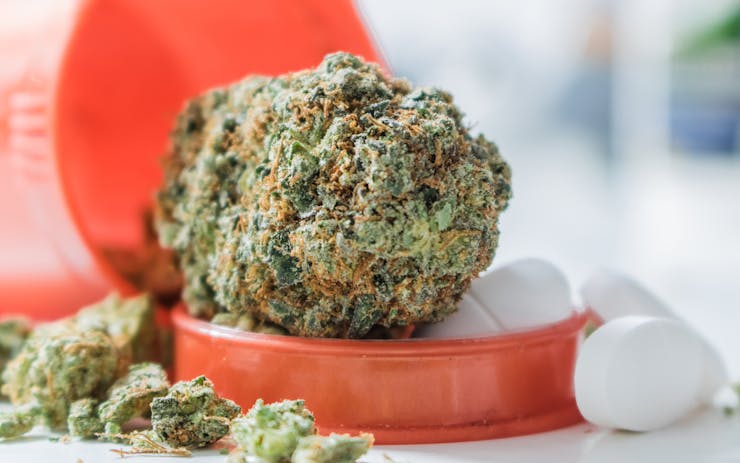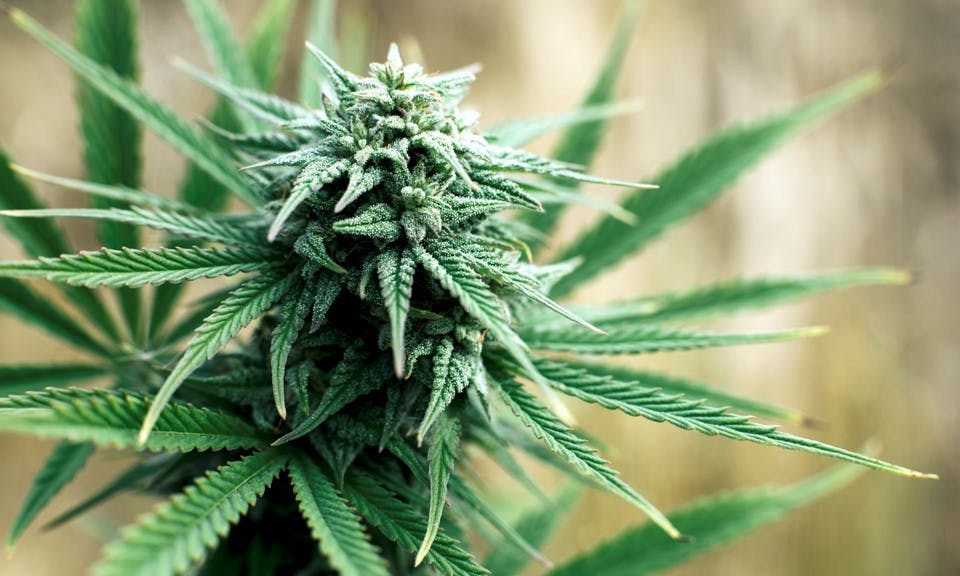Ethan Russo is internationally renowned for his research on cannabis compounds and their roles in the body. As a neurologist and psychopharmacologist, Russo has established himself as a crucial champion of the integral roles plant-based medicine should play in modern therapeutics. After wrapping up a decade-plus run as Senior Medical Advisor for GW Pharmaceuticals in 2014, Russo co-founded PHYTECS, a biotechnology company devoted to researching and developing medical approaches to the human endocannabinoid system, for which Russo serves as Medical Director. (In his spare time, he hosts Reddit AMAs.)

(Courtesy of Ethan Russo)
Earlier this month, Dr. Russo joined forces with Americans for Safe Access (ASA) to address one of North America’s gravest problems: the opioid crisis, which now claims the lives of 60,000 Americans and 2,500 Canadians a year, with opioid overdoses killing 80 people a day. Russo’s ASA-sponsored webinar, ‘Cannabis: An Unconventional Solution to the Opioid Crisis?’ laid out the surprising history of the tandem use of cannabis and opioids, and highlighted contemporary research confirming the efficacy of mitigating the problems of opioids with cannabis. Here are six takeaways.
1. Combining cannabis with opioids is nothing new.
As Leafly has reported, cannabis’ potential in fighting the opioid epidemic ranges from replacing or enhancing opioids in the treatment of chronic pain to serving as an exit drug for those fighting opiate addiction. As Dr. Russo explained, none of this is unprecedented.
“The bane of many opiates…is that the relief of the moment is purchased at the expense of tomorrow’s misery.”
In the early 1800s, London physician Dr. John Clendinning chronicled his successful use of cannabis (then called “Indian hemp”) to treat migraines, noting that cannabis also helped lessen the intensity of a patient’s morphine withdrawal symptoms. During the US Civil War, cannabis was used as a tandem treatment with opium to treat dysentery. In 1868, Sir John Reynolds, physician to Queen Victoria, came out swinging for cannabis’ superiority as a painkiller: “The bane of many opiates…is that the relief of the moment is purchased at the expense of tomorrow’s misery,” wrote Reynolds, alluding to the withdrawal symptoms and gastrointestinal distress that can accompany opiate use. “In no one case to which I have administered Indian hemp, have I witnessed any such results.”
2. A key appeal of early medical cannabis was its ability to kill pain without inducing nausea or sleep.
As 19th-century Philadelphia physician Hobart Hare wrote, “The advantages in [cannabis] use over opium consist chiefly in the absence of prostration and nausea after its ingestion, and in the partial lack of soporific power which it possesses compared to the opiate, for in certain cases sleep is not always desirable when pain is to be removed….I have found the efficient dose of a pure extract of hemp to be as powerful in relieving pain as the corresponding dose of the same preparation of opium.”
3. Using cannabis to treat opiate addiction is also nothing new.
In 1902, the American doctor Thomas D. Crothers hailed cannabis’ “temporary removal of the worst symptoms” of opioid addiction, and in 1944, the LaGuardia Commission tested extracts of cannabis on incarcerated opiate addicts and found they had much less severe withdrawal symptoms.
4. Opioids kill 80 Americans a day. Cannabis has never killed anyone. The reason? The way cannabinoid receptors are deployed in the brain.
Opioid overdoses routinely cause death by overloading the opioid receptors in the brain’s cardiorespiratory centers, with the result being “respiratory depression” that causes users to simply stop breathing and die. As Dr. Russo noted, while the brain is rich in cannabinoid receptors, there are almost no cannabinoid receptors in the brain’s cardiorespiratory centers—which is why no one has ever gotten so high they stopped breathing.
5. It’s not just THC. CBD also has a place in fighting the opioid epidemic.
Studies of opiate-addicted rats have shown that administering CBD inhibits opiate-seeking behavior. Dr. Russo noted that high doses of CBD can effectively deactivate the drug-seeking part of brain, with no psychoactive “high” effect.
Shop highly rated dispensaries near you
Showing you dispensaries near6. While the US struggles to get up to speed on cannabis’ opioid-replacing potential, 29 other countries are racing forward.
Nabiximol is the legal-in-29-countries-but-not-the-US oral cannabinoid spray that effectively proves cannabis’ ability to replace opioids in pain-management plans. Dr. Russo noted the two-week cannabis trial among a European hospice population with opioid-resistant pain, where steady doses of Nabiximol brought a 30% reduction in patients’ pain. What’s more, researchers found significant success in sustaining the pain-killing properties of Nabiximol without escalating the dose—a veritable miracle in the world of pain management, where opioid dose escalation has previously been the name of the game.
To see video of Dr. Russo’s webinar in full, visit Americans for Safe Access.






